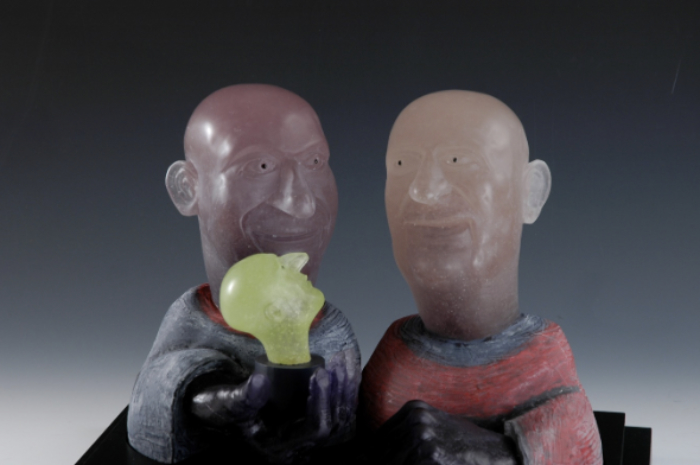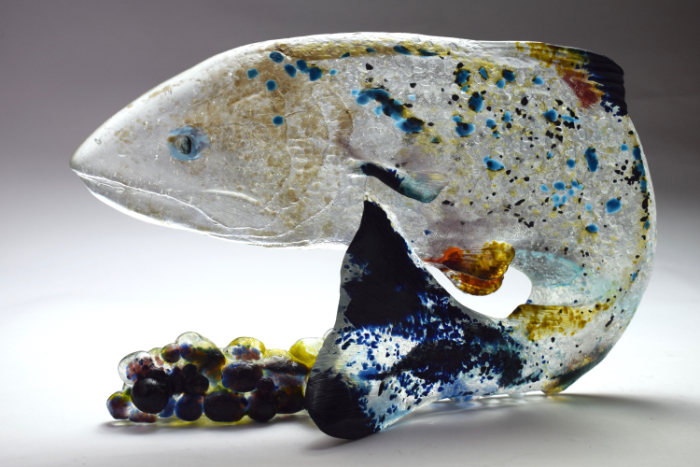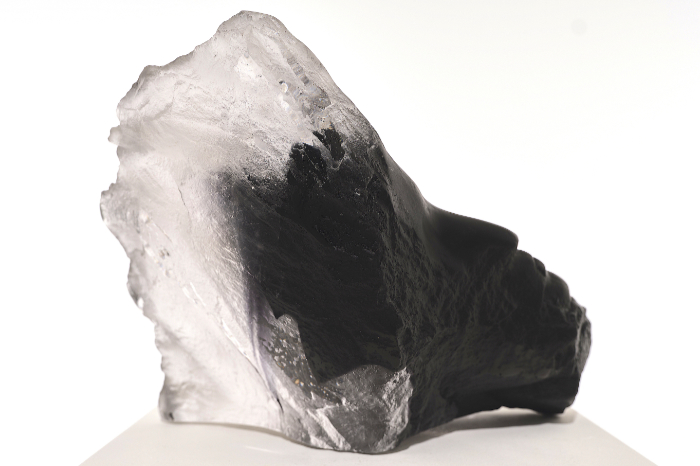
Never too late
Ahuva Zeloof began pursuing her sculpting career after the age of 70 and is now exploring glass as a medium. Here she explains how she found her way to creating with glass and the inspirations behind her work.
You are an accomplished sculptor, but only began following your artistic journey later in life. What led you to start on this creative career?
I was busy bringing up a family and I didn’t have a lot of time for art. I went to galleries and explored and had moments of inspiration, but I didn’t have time to dedicate to a practice, since I have four children.
As it happened, when I was cooking with a friend one day, she said, “Oh, your cookies are lovely. Each one’s exactly like the other. Let’s go and do some art.” Because of the symmetry she saw in my baking, she decided I had arty tendencies, and she invited me to a clay sculpture class. I loved it! It felt like it was a gift to be explored. That’s how I started creating art later in life, in my seventies. It’s never too late.
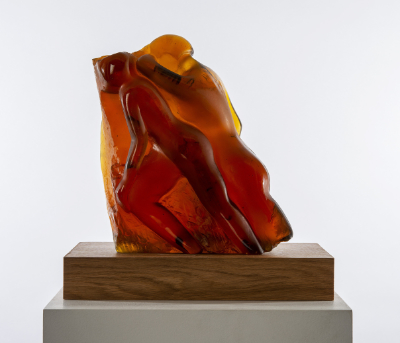
You have worked with bronze and stone and more recently started using glass. What fascinates you about glass as a material?
I began creating sculptures from clay, which eventually I came to dislike. Then I moved on to wax and bronze, then stone. Each material I explored was interesting in its own way: stone is lovely and tactile, though chiselling is hard work; bronze is malleable and has its own life. But when I saw my first glass sculpture, it didn’t even resemble the original. The interplay of light and darkness, as well as the bubbles in the glass, are fascinating. It completely blew my mind. After that first sculpture, I started experimenting with coloured glass.
What glass techniques have you used, and which do you prefer?
I work with a glass foundry. I take an original sculpture I’ve carved in stone or cast in bronze, then create a mould based off that piece. I may try different colours for the glass and experiment with the technique to see if we can create more bubbles and textures within. It takes a long time. The glass is poured very slowly, little by little, and the resultant sculptures are never the same. Even two pieces done at the same time will look different. You can’t fully control the light or streaks within the glass, and often the process feels more intuitive than scientific.

You mostly focus on the human form as a subject. Why is this?
I used to teach yoga, and yoga is not just about the physical body, but also the body’s soul. When I look at a stone, it’s as if it’s talking to me, and expressing a feeling that I can see – perhaps an inner strength. I do yoga myself, which removes the need for a model, since I know the human body well – especially women’s bodies. When you look at my pieces, you can feel their movement, like a yoga stretch.
What is your creative approach? Do you draw your ideas out or dive straight in with the materials?
I don’t draw. I take a piece of stone, I look at it, I start chiselling, and the form just happens. Even if I make a ‘mistake’, I don’t see it as a mistake, since I can improvise around it. It’s all up there, in the hands and the head. These idiosyncrasies of carving make their way into the glass mould and are re-translated in a second medium when they become glass. That’s an exciting process – the material itself inspires me and it can be amazing to see the glass mimic stone or filter light and shadow to create new meaning.

What message(s) do you want to convey through your art?
When people look at my sculptures’ faces, they often start asking, “Oh, what is she thinking? What is she doing? What is she going to do?” It’s a kind of meditation, capable of taking you to a different world. When the light hits the glass, they seem to come to life and have their own personalities, dictated by pose, expression, and so forth.
When you look at a piece of art and you’re with it on your own, you start a kind of dialogue; it sparks feelings in you. I’m trying to encourage people to discover their own thoughts through art and to interact with sculpture.
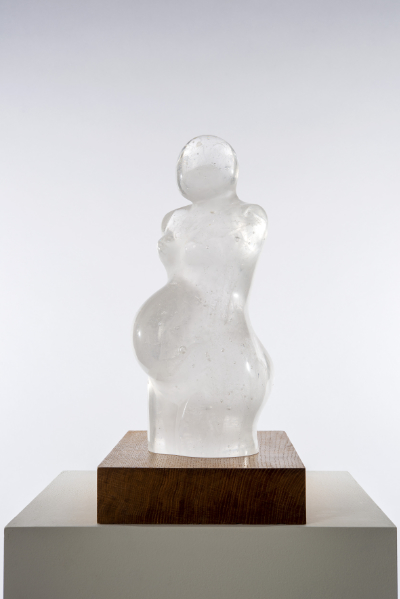
What is your favourite tool or piece of equipment and why?
The most important thing is the mould. I begin with a model made of stone, but you need to do the mould properly before you can add the glass. It’s what controls the thickness of the glass, how it’s mixed, and the colours that it produces.
Do you have a favourite piece you have made? Why is it your favourite?
At the moment it’s a piece I call ‘Lovers’, which portrays two women, both pregnant. The future’s open to them, and the two females are together. I like to think that there’s a hopefulness to the piece, especially with how it interacts with light. The glass sculpture can’t be compared to its stone original.
That’s why I continue using glass in my sculptures, because it’s constantly surprising, and you never know what it will look like after it sets and dries. When you open the mould, it’s a whole new world. ‘Lovers’ is my piece for now, but I think the next one I make will be another favourite.
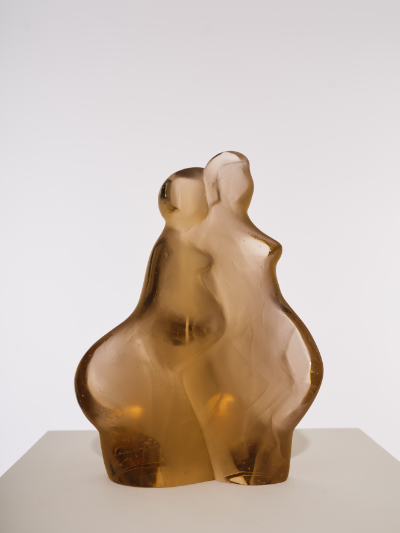
You have had successful solo shows, including exhibiting alongside famous names like David Hockney and Sir Peter Blake. How did these events come about?
In this industry, sometimes it feels like all you do is submit pieces to exhibitions. You have to put your work out there, enter competitions, speak to curators and artists, and hope that they like the pieces and take them. But it’s not just the exhibiting that’s important to me; I love interacting with amazing fellow artists. If I wasn’t an artist myself, I would never have met them. Having my work exhibited alongside well-known artists like the ones you’ve mentioned, and also Tracey Emin, is exciting, but interacting with other creatives through the process is what truly inspires me.
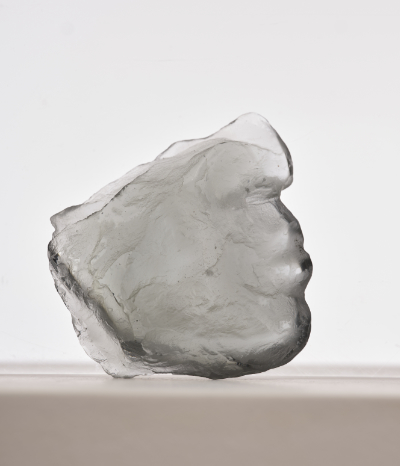
Where is your creative practice heading next?
I’m working on an art book (my first!) based on a new sculpture series called ‘Faith’, but I can’t tell you much about it yet. Meanwhile, my next project will involve making new glass moulds from old stone carvings.
I’ve got my own style. Usually, when people look at my sculptures, they say, ‘Oh yes, it’s Ahuva’s work’. In my next collection, I’m hoping that no one will be able to tell it’s mine at first glance. I don’t like being monotonous.
Something else I’m passionate about is developing an exhibition where blind and partially sighted people can interact with sculptures, as they’re often not allowed to touch art. On the flipside of this, I really want sighted people to experience sculpture in the dark, so they can perceive the tactile qualities of the pieces. Part of this is also fostering understanding between able-bodied people and those with reduced vision.
At the end of November 2024, I’ll be taking part in a workshop with a charity for the blind and partially sighted, and I’m hoping this leads to bigger events and workshops on this topic in the future, since I think art needs to be open to everyone.

Find out more about Ahuva and her work via her website: https://www.ahuvazeloof.com
All images photographed by Georgia Metaxas, apart from the image of Ahuva in her studio, which was taken by L Goldblatt.
